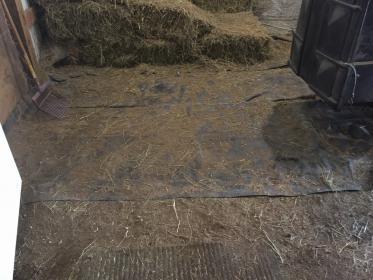I’ve waited a year to make this post. I wanted to verify my hypothesis before touting it’s success.
I am using rubber roofing material (The stuff used on flat roofs - Typically a 45 - 60mil EPDM rubber sheet) between the ground and the hay. It has worked perfectly - absolutely no mold issues.
The benefits:
- It is easy to walk on
- once it is in place, you never have to move it
- It sweeps off very easily
- It doesn’t allow for a rodent super-highway through the openings like pallets do
- You can drive your tractor/ATV on it
I’ve had hay stored on 45yo concrete mold on me from ground moisture wicking through the concrete, so I switched to setting the hay on pallets. Then I read about using asphalt for flooring in a hay-shed because it is impermeable for moisture. I put two and two together and came up with six - I need to block the moisture from the ground; but plastic tarps will get punctured by the rocks underneath - what about rubber?
Googling the material - it sells for a little more than a $1.00 per square foot. So I contacted a roofing company. They sold me a pallet (about 1000 square ft) of used stuff for $50! It has a couple holes in it, so I laid another layer over those spots. It has worked GREAT!

 oh… and my husband is a roofer among other general contracty things.
oh… and my husband is a roofer among other general contracty things.

